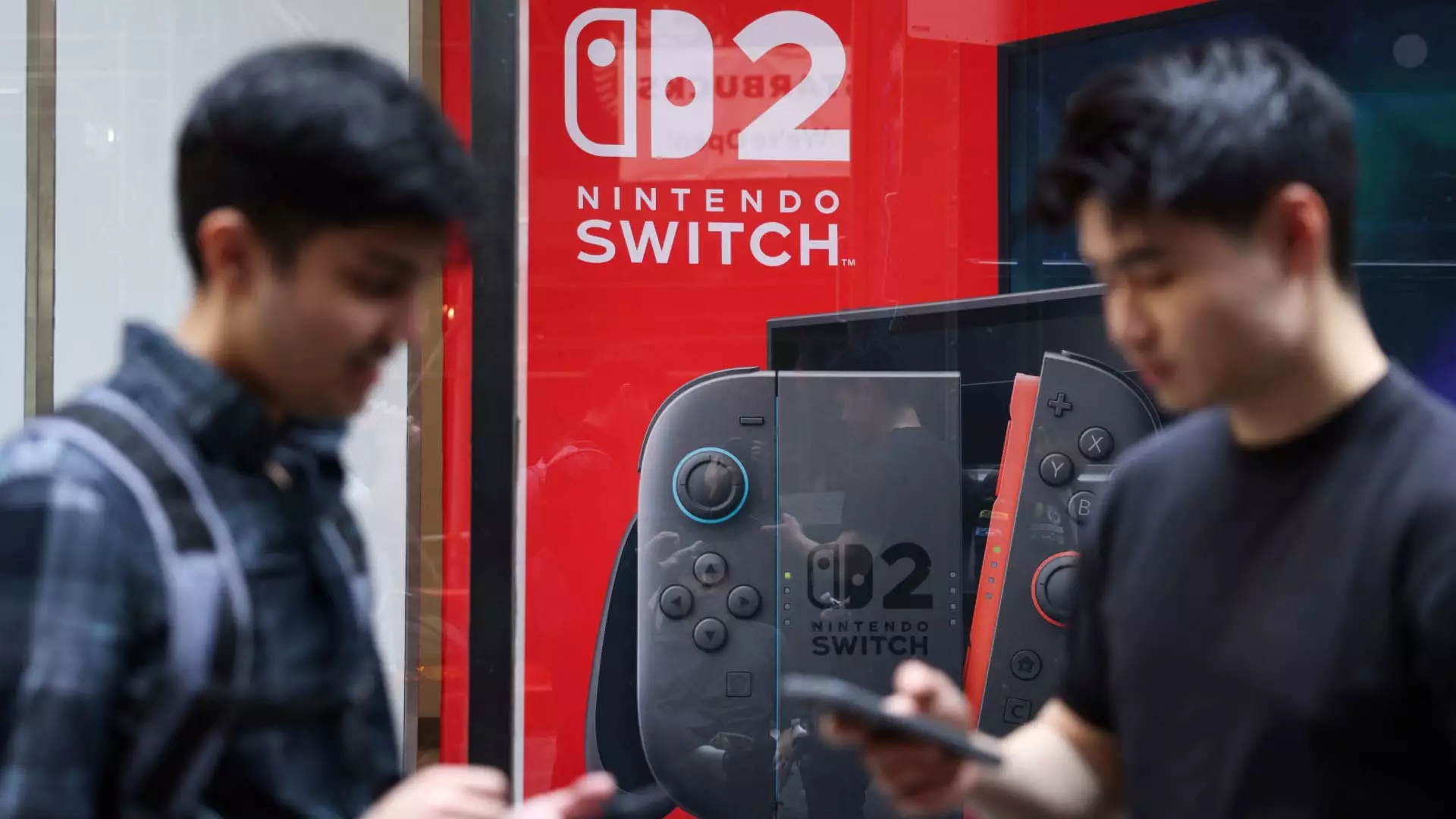The gaming landscape has been charged with palpable excitement as Nintendo unleashes its much-anticipated Switch 2, a successor to one of the most celebrated consoles in history. Since its launch, the original Switch has sold over 152 million units, positioning it as a titan in the gaming industry. Analysts have hailed this new release as potentially the biggest console launch the world has yet seen. However, does the overwhelming enthusiasm mask a more underlying concern about consumer demand and production capabilities?
Nintendo is banking on the success of the Switch 2 not just to sustain its booming shares—which have surged nearly five-fold since the original’s introduction in March 2017—but also to cement its place in the evolving world of gaming. But one wonders, will this console truly live up to the hype, or will it fall short of expectations in a market that is already saturated with choices?
The Supply Chain Conundrum
As the launch date approached, reports surfaced of stock shortages and long queues at various outlets. Notably, over 2.2 million consumers in Japan entered a lottery for a chance to secure their own console on opening day—an indication of interest that seems both promising and concerning. When demand so drastically outstrips supply, it raises questions about Nintendo’s foresight in production planning. Could they have anticipated the fervor, or are they naively riding a wave they didn’t fully understand?
Industry experts predict shortages are likely to persist, particularly in Japan, where the demand seems insatiable. Serkan Toto of Kantan Games articulates a critical point: “You cannot walk into a store anywhere in Japan to pick up a Switch 2 without a pre-order.” This suggests not just an impressive demand but also a potential failure of distribution strategy. What good is a groundbreaking product if consumers can’t actually buy it?
A Double-Edged Sword of Pre-Orders
While impressive pre-order numbers are usually seen as a positive signal, skepticism remains. With 400,000 reservations noted in China, it’s essential to consider that not every pre-order translates to an actual sale. In a market that thrives on instant gratification, the gap between pre-order enthusiasm and final acquisition could be a harbinger of disappointment. Are consumers merely caught in the sensational narrative, only to find that obtaining the console is fraught with complications?
The U.S. market follows suit, with retailers like Best Buy and Walmart drawing crowds that reflect the console’s popularity. However, the troubling fact that Walmart’s website shows the console sold out before many could even place an order raises concerns about whether the hype surpasses actual product availability. If so, consumers may end up experiencing the kind of buyer’s remorse that is far from exhilarating.
Comparison with Competitors
Amidst this buzz, it’s crucial to consider how the Switch 2 will stack up against its fierce competitors. While Nintendo has been lauded for its innovative approach to combining console and mobile gaming, others in the market are not standing still. Sony’s PlayStation and Microsoft’s Xbox continue to push boundaries with graphics and immersive experiences. Will the Switch 2’s hybrid model still hold up in an environment increasingly defined by realism and complexity?
Nintendo CEO Shuntaro Furukawa likely feels the pressure. Analysts have given what some might consider conservative estimations, forecasting 15 million units sold by March 2026. Yet others suggest this number could be as high as 20 million, and recent sales figures indicate that 14.4 million could be moved within just the next year alone. Ambitious projections like these often have a catch—will they create unrealistic consumer expectations?
The Fan Factor: Love or Dependency?
The fervor surrounding the Switch 2 also delves into the complexities of fan culture in gaming. Nintendo has long fostered a kind of devotion seldom seen elsewhere, and their loyal customer base is a double-edged sword. This fervent loyalty prompts fans to pre-order without fully understanding whether the product will meet their heavy expectations. Is that love genuine, or is it symptomatic of a dependency on brand nostalgia?
With powerful franchises like Zelda and Mario under its belt, Nintendo has capable tools for driving engagement and sales. Nonetheless, one must wonder whether the company is resting too comfortably on such iconic laurels, potentially stifling innovation and risking alienation of a gamer demographic that craves new experiences.
In sum, the launch of the Switch 2 paints a complex picture of ambition, demand, and trepidation. Nintendo stands at a crossroads, and while the hype currently fuels their momentum, the sustainability and fulfillment of that demand remain to be seen.

